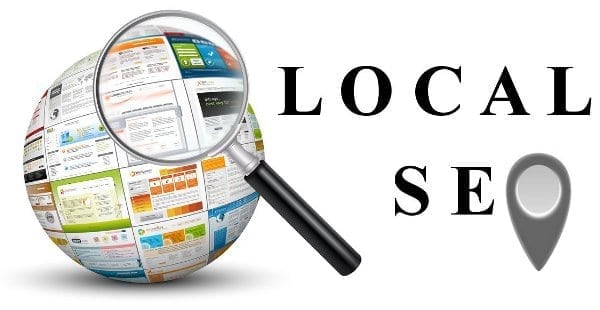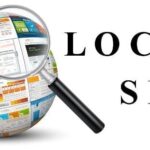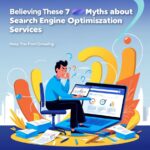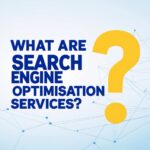Have you ever wondered how some websites appear at the top of search results? It’s not magic; it’s Search Engine Optimization (SEO). Think of SEO as your website’s guide, helping search engines like Google understand what your site is all about. When done right, SEO can bring a flood of organic traffic to your digital doorstep. And the best part? It’s easier than you’d imagine. With this guide, you’ll be able to master search engine optimization services with these 7 tips, making it less of an enigma and more of a superpower.
WHY DOES SEO EVEN EXIST?
Having a website in today’s online world is only the beginning. Getting people to discover it is the true challenge. That’s where SEO comes in. It’s all about maximizing your web presence so that search engines recognize your value and direct you to the audience that matters. For small businesses, in particular, knowing how to leverage SEO services is a game-saver. It brings the playing field to level ground, and you can compete with the big boys without spending a fortune on advertising.
TIP 1: START WITH BRILLIANT KEYWORD RESEARCH
All successful SEO adventures begin with knowing what your target customers are looking for. And this is where keyword research excels. It’s not a guesswork-based process; it’s about tooling and leveraging people’s knowledge to identify the exact terms and phrases that folks enter into search engines.
Discovering Your Audience’s Language
- Imagine yourself as a detective.
- What issues are your customers looking to resolve?
- What are they asking?
- Let’s say you sell handcrafted jewelry. People may be looking for “distinctive silver necklaces” or “handcrafted earrings online.” These are your keywords.
Tools of the Trade
You don’t need to break the bank on software to begin. The Google Keyword Planner, although associated with Google Ads, provides valuable information. Free tools, such as Ubersuggest or Answer the Public, can also provide a treasure trove of related terms and questions.
Focus on Long-Tail Keywords
Whereas “jewelry” is a general term, “handmade sterling silver pendant with birthstone” is a long-tail keyword. Such longer, more descriptive terms may have lower search volume, but they tend to convert better. Why? Because the person searching for such a unique phrase knows precisely what they’re looking for. They are more advanced in their purchase process. This is one of the simplest SEO tips for beginners to understand.
TIP 2: CREATE ENGAGING CONTENT THAT MATTERS
Having established what the people are looking for, the next step is to provide them with answers. Content is king, and good quality content is the crown of any successful SEO effort.
Solve Problems, Provide Value.
YOUR CONTENT
You should try to answer a question or fix a problem for your readers. If you’re a baker, consider blogging about “the best gluten-free cake recipes.” If you provide plumbing services, design a tutorial on “how to repair a leaky faucet.” When you create real value, readers will spend more time on your website, telling search engines that your content is valuable.
EMBRACE DIFFERENT CONTENT FORMATS
Content isn’t limited to blog articles. Consider videos, infographics, in-depth guides, case studies, or podcasts. People have different preferences. Mix it up, keep things engaging, and allow yourself to reach a wider audience. This is one of the main elements of straightforward SEO methods for websites.
NATURALLY, WEAVE IN KEYWORDS
Your keywords must appear naturally in your content. Do not “stuff” them in. Search engines are intelligent; they can detect keyword stuffing, which can negatively impact your rankings. Opt for a natural inclusion that benefits readability. Prioritize topics, not keywords alone.
TIP 3: OPTIMIZE YOUR WEBSITE’s ON-PAGE ELEMENTS
Aside from the content, there are certain things on every one of your website pages that you must optimize. They are referred to as on-page SEO elements.
TITLE TAGS AND META DESCRIPTIONS
These are the results that users see in search. Your title tag (the clickable headline) needs to be attention-grabbing, brief, and contain your primary keyword. Your meta description (the summary under the title) needs to make users want to click. Imagine them as your site’s billboard on the search results page.
HEADER TAGS (H1, H2, H3 etc.)
Organize your content using header tags. Your H1 tag must be your title. Your H2s and H3s organize your content into bite-sized pieces. This enhances user readability and enables search engines to comprehend the structure of your content.
IMAGE OPTIMIZATION
Photos keep your site interesting, but they also make it slower if they‘re not optimized. Compress images before uploading them. Use keyword-rich alt text and descriptive file names. Alt text informs search engines about the nature of your photo, as well as visually impaired users, for increased accessibility. This is essential in enhancing website SEO with insider information.
URL STRUCTURE
Keep your URLs short and descriptive, and include keywords where appropriate. For example, yourwebsite.com/easy-seo-tips is much better than yourwebsite.com/pageID=456.
TOP 4: BUILD HIGH-QUALITY BACKLINKS
Backlinks are like votes of confidence from other websites. When another reputable website links to your content, it signals to search engines that your content is valuable and trustworthy. This is a powerful factor in what makes SEO services effective.
QUALITY OVER QUANTITY
All backlinks are not the same. A link from an extremely authoritative site (such as a large news website or industry giant) is going to be worth much more than dozens of links from low-quality spam pages. Concentrate on getting links from relevant and high-quality sources.
Tactics for Getting Backlinks
Produce spectacular content: If your content is first-rate, other sites will naturally want to link to it.
Guest posting: Write a blog post for a different website within your niche. As a trade-off, you can sometimes add a link to your site.
Broken link building: Discover broken links on other websites and propose replacing them with your relevant content.
Outreach: Contact websites that name your brand or niche and ask politely for a link if appropriate.
TIP 5: MAKE SURE YOUR SITE IS MOBILE-FRIENDLY AND FAST
In 2025, having a slow or non-responsive website is your SEO death knell. Google favors mobile-first indexing, which means it primarily considers the mobile version of your content for ranking purposes.
MOBILE RESPONSIVENESS IS NON-NEGOTIABLE
Your site needs to resize flawlessly on any screen – desktops, tablets, and smartphones. When users have a terrible experience on mobile, they’ll leave, and Google will notice. It’s a fundamental principle of SEO tips for 2025 in business development.
SPEED MATTERS
Your website’s load speed is an important ranking factor. Users want to see fast-loading pages, and search engines reward sites that can deliver.
HOW TO IMPROVE SPEED
Optimize images: As noted previously, compress them.
Take advantage of browser caching: This feature caches portions of your site in a user’s browser, making subsequent visits faster.
COMPRESS CSS AND JAVASCRIPT:
These are code files. Shrinking their size will significantly improve load times.
Use a good web host: Your hosting company has a significant impact on the speed and uptime of your site.
TIP 6: ADOPT LOCAL SEO (FOR SMALL BUSINESSES IN PARTICULAR)
If your company caters to a specific geographical location, Local SEO is your best-kept secret. It assists individuals in your vicinity to locate your products or services when they conduct local searches (for instance, “bakeries near me” or “plumber in (your city). This is crucial for realistic SEO tips for small websites.
GOOGLE BUSINESS PROFILE (GBP)
Claim and optimize your Google Business Profile listing. This is perhaps the most significant local SEO attribute. Complete each section in full and accurately, such as your business name, address, phone number (NAP), hours, website, and images. Invite customers to review you.
LOCAL CITATIONS
Make your NAP details consistent across all online directories (Yelp, Yellow Pages, etc.). Inconsistencies can confuse search engines and negatively impact your local rankings.
LOCAL KEYWORDS
Use location-based keywords within your site content, for instance, “best coffee shop in [your city]” or “auto repair services [your town].” This is crucial for search engine optimization tips for new sites.
TIP 7: MONITOR, ANALYZE, AND ADAPT
SEO is not a “set it and forget it” approach. It’s a continually evolving process. Search engine algorithms fluctuate, competition changes, and user behavior adapts. Keeping a. constant eye on your performance and tweaking your approach is the key to long-term achievement. This is the way you master SEO fundamentals step by step.
GOOGLE ANALYTICS
This free service from Google gives you incredibly useful information about your website traffic. You can observe how many visitors come to your website, where they are from, which pages they look at, and how long they stay.
GOOGLE SEARCH CONSOLE
Another free and invaluable resource. Search Console allows you to see how Google perceives your website. It informs you about the keywords you’re ranking for and any issues related to indexing, providing insight into your backlink profile.
TRACK YOUR RANKINGS
Use tracking tools (free or paid) to monitor your keyword rankings. Are you climbing or descending for your target phrases? This informs you about what’s going well and what requires tweaking.
STAY CURRENT
Read established SEO blogs and news outlets. Algorithms are refined continuously. Being in the loop enables you to change your approach ahead of time. This is how you keep your actionable SEO advice for website traffic effective.
TOP 7 SEO SERVICE TIPS THAT WORK SUMMARIZED
Begin with Genius Keyword Research: Know what your people are looking for.
Write Engaging Content That Sticks: Deliver value and respond to questions.
Optimize Your Site’s On-Page Features: Tune titles, descriptions, and images.
Create High-Quality Backlinks: Receive votes of trust from other high-quality sites.
Make Your Site Mobile-Friendly and Fast: Keep user experience in mind on every device.
Leap into Local SEO: Get discovered by customers in your local vicinity.
Monitor, Analyze, and Adapt: SEO is a continuous process of optimization.
SEO Services Described in Plain Language: It’s All About Visibility and Relevance
Essentially, SEO services simplified mean making your website more accessible and useful to search engines and, indirectly, to your audience. It is about making every detail of your online presence optimal so that when users search for what you provide, your website is one of the first they encounter. It’s a step-by-step SEO services guide that, when followed, results in long-term growth.
LEARNING HOW TO DO SEO OPTIMIZATION FOR YOUR WEBSITE ISN’T RESERVED FOR COMPUTER WIZARDS.
It’s a function that any business owner or marketing professional can learn. By prioritizing these basic tips, you’re not only pursuing rankings; you’re constructing a stronger, more accessible web presence for your company. So, please begin using these tips today and see your website rise in the search engine ranks!
FREQUENTLY ASKED QUESTIONS (FAQ) ABOUT SEO
Q1: How long does SEO take to start delivering results?
A1: SEO is not a quick fix. It’s the marathon, not the sprint. You may begin noticing some early gains within a few weeks or months, but meaningful results usually require 6 to 12 months or more, particularly for competitive terms. Consistency and patience are the watchwords.
Q2: Is SEO still useful with social media and paid advertising?
A2: Absolutely! SEO is more relevant than ever. While social media and paid ads offer immediate visibility, SEO provides organic, sustainable traffic. Organic search users often have higher intent and are more likely to convert. Think of SEO as building a long-term asset for your business. It complements other marketing efforts beautifully.
Q3: Can SEO guarantee me the #1 spot on Google?
A3: No honest SEO expert or firm can promise the # 1 position. Google’s algorithm is constantly evolving and complex. Good SEO is about using best practices and optimizing your site to achieve a higher ranking through quality and relevance. The aim is to optimize your exposure, not simply pursue a solitary slot.
Q4: What’s the most common SEO newbie mistake?
A4: The largest blunder is usually inconsistency or quitting too early. SEO is a continuous process that requires adaptation. Another mistake people make is focusing solely on keywords without creating high-quality, user-friendly content that genuinely benefits the user. Keep in mind that solid, engaging content is the foundation of good SEO.
Ready to take your online presence to the next level?
Start applying these top 7 SEO service tips that drive success today and watch your website flourish. For customized advice on perfecting the science of search engine optimization services with these seven tips and maximizing your website’s full potential, call us now for a free SEO consultation!
 Real Estate / Property
Real Estate / Property 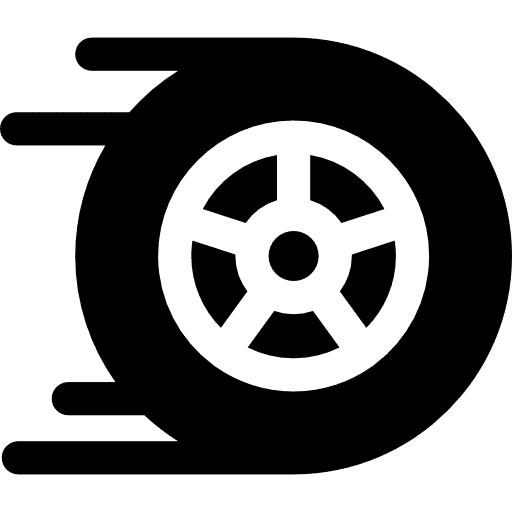 Vehicles
Vehicles  Bikes
Bikes  Mobiles & Tablets
Mobiles & Tablets  Electronics
Electronics  Furniture & Home Decor
Furniture & Home Decor  Fashion & Beauty
Fashion & Beauty 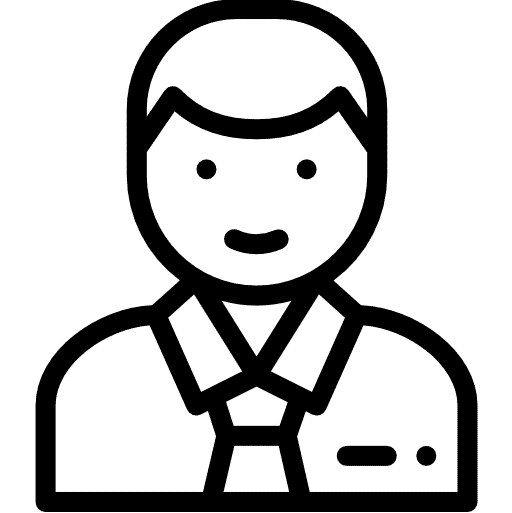 Jobs
Jobs 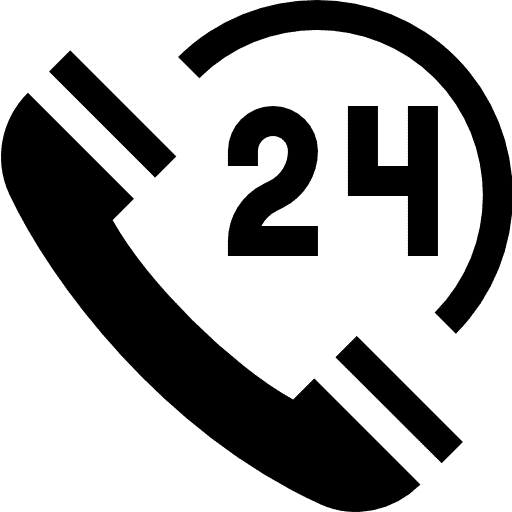 Services
Services  Pets / Animals
Pets / Animals 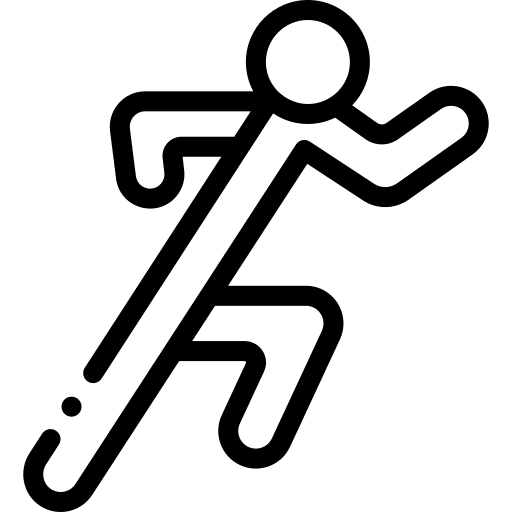 Books, Sports & Hobbies
Books, Sports & Hobbies  Kids
Kids  Business, Industrial & Agriculture
Business, Industrial & Agriculture 

